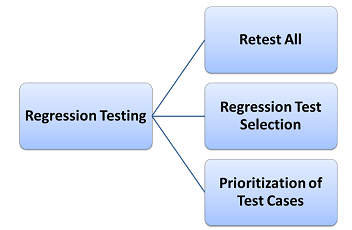In software development, ensuring applications’ stability and reliability is paramount. As developers add new features, fix bugs, and make changes, it becomes crucial to validate that existing functionality remains intact. Developers can leverage regression testing at this point. This comprehensive guide will delve into regression testing, understand its significance, explore various techniques, and highlight best practices to help you implement it effectively in your software development projects.
Definition and Purpose of Regression Testing
Regression testing verifies that modifications or enhancements to a software application do not bring unintended side effects or cause previously working features to fail. The main objective of this is to guarantee that the current features are functioning effectively. By performing regression testing, you can maintain software quality throughout its lifecycle.
Regression Bugs and Risks
Regression bugs are defects that resurface or appear due to changes made in the software. These bugs can have various impacts, including compromising the system’s stability, affecting user experience, or even leading to critical failures. Identifying and addressing regression bugs is crucial to prevent customer dissatisfaction, financial losses, and reputational damage. Regression testing is vital in mitigating these risks by catching and rectifying issues early on.
Differentiating Functional Testing and Regression Testing
It’s essential to differentiate between functional and regression testing, as both serve distinct purposes in the software testing landscape. While functional testing verifies the expected behavior of specific features or functionalities, regression testing ensures the system’s overall stability. Developers perform functional testing during initial development or when introducing new features, whereas regression testing is an ongoing process following subsequent changes. By conducting regression testing, you can safeguard against regression bugs and maintain the integrity of your software product.
Regression Testing Techniques and Approaches
Several techniques and approaches can be employed to perform regression testing effectively:
- Retest-All: This approach involves re-executing all test cases, ensuring the entire system is retested after every change. It is resource-intensive and time-consuming, making it suitable for critical systems or situations where the impact of a regression bug can be severe.
- Selective Testing: In this approach, a subset of test cases is chosen based on specific criteria such as high-risk areas, frequently used functionalities, or areas prone to regression issues. It aims to balance thoroughness and efficiency, enabling a more targeted regression testing process.
- Prioritized Testing: Prioritize test cases based on their impact and likelihood of regression. High-priority test cases covering critical functionalities are emphasized more, while lower-priority cases are executed as time allows. This approach optimizes testing efforts by focusing on areas more prone to regression bugs.
Automation for Regression Testing
Regression testing automation plays a crucial role in enhancing regression testing effectiveness. Several tools and frameworks are available that facilitate the automation of regression tests, including:
- Selenium: A popular open-source automation framework for web applications, Selenium enables the creation and execution of robust regression test suites.
- JUnit and TestNG: These widely used testing frameworks for Java provide features for organizing and running regression tests, generating reports, and managing test dependencies.
- Cucumber: An effective tool for behavior-driven development (BDD), Cucumber allows the creation of human-readable regression test scenarios using the Gherkin language.
By leveraging automation regression testing tools and frameworks, you can streamline the execution of regression tests, expedite the identification of regression bugs, and save valuable time and effort.
Best Practices for Efficient and Effective Regression Testing
To ensure efficient and effective regression testing, consider the following best practices:
- Define a comprehensive set of regression test cases: Identify critical functionalities, high-risk areas, and edge cases, and design a test suite that covers them adequately.
- Establish a maintainable regression test suite: Organize test cases in a structured manner, using a modular approach that allows easy maintenance and updates as the software evolves.
- Automate repetitive and time-consuming regression test cases: Leverage automation tools to automate tests prone to human error, repetitive, or time-consuming to execute manually.
- Utilize version control systems: Maintain a repository of test cases and associate them with the corresponding changes in the software, allowing for better traceability and understanding of regression test coverage.
- Perform impact analysis: Identify high-risk areas and functionalities likely affected by changes and prioritize regression tests accordingly.
- Regularly review and update regression test cases: Keep your regression test suite current by incorporating changes, removing obsolete tests, and adapting to evolving requirements.
- Adopt a balanced approach: Combine different regression testing techniques and approaches based on your project’s specific needs, ensuring thoroughness without sacrificing efficiency.
By following these best practices, you can optimize your regression testing efforts, maximize test coverage, and minimize the risks associated with regression bugs.
Conclusion
Regression testing in agile development is essential to the SDLC, ensuring that changes to a system do not introduce unintended side effects or compromise the application’s stability. By embracing the concept of regression testing, employing suitable techniques and approaches, leveraging automation tools like HeadSpin that let you connect to real, SIM-enabled devices, and adhering to best practices, you can minimize the risks associated with regression bugs and deliver a high-quality, stable software product. Make regression testing an indispensable component of your testing strategy to provide a seamless user experience and maintain the integrity of your software systems.

















Leave a comment